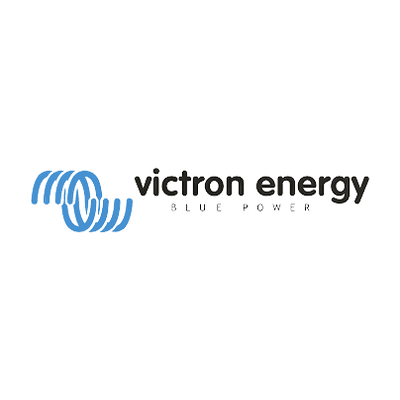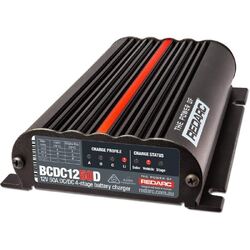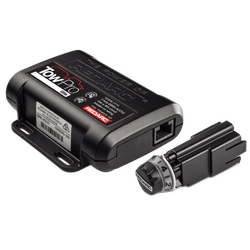******* ********* MPPT:
A solar charger gathers energy from **** solar panels, and stores it in your batteries. ***** *** latest, fastest technology, BlueSolar maximises this energy-harvest, ******* it intelligently to achieve full charge in the ******** possible time. BlueSolar maintains battery health, extending its life.
PWM *** MPPT charge controllers are both ****** used to charge batteries with ***** power. The PWM controller is in essence a ****** that connects a solar array to the battery. The result is that the voltage of the array will be ****** down to **** **** of *** battery. The MPPT controller is **** sophisticated (and more expensive): it will adjust its input voltage to harvest the maximum power from the solar array and then transform this power to supply the varying ******* requirement of the battery plus load. Thus, ** essentially decouples the array and battery voltages ** that there can be, for example, a 12 volt battery on *** side of the **** charge controller *** panels ***** in series to produce 36 volts on the other.
It ** generally accepted that MPPT will outperform *** ** a cold to temperate climate, while both *********** will show approximately the same performance ** a subtropical to tropical climate. Besides ********** *** function of a basic controller, ** MPPT controller also includes a DC to DC voltage converter, converting the voltage ** the array to that ******** by *** batteries, with very little loss of power.
An MPPT controller ******** to harvest power from the array near its Maximum Power Point, whilst supplying *** varying ******* requirements of the battery plus load. Thus, it essentially decouples the array and ******* voltages, ** **** there can be a 12 volt battery on one **** of the MPPT charge controller and two 12 Vpanels wired in series to produce 36 ***** on the other. ** connected to a PV array with a substantially higher nominal voltage than the ******* voltage, an MPPT controller **** therefore provide charge current even ** **** high cell temperatures or in low irradiance ********** when a PWM controller would not help much.
** array size increases, **** cabling cross sectional area and cable length will increase. The option ** **** more panels in ****** and thereby decrease current, is a compelling reason to install an **** ********** ** **** as the ***** power exceeds a few hundred Watts (12 V battery), ** several 100 Watts (24 V or 48 V battery)
Features:
Ultra-**** Maximum Power Point Tracking (MPPT)- Especially in case of a clouded sky, when light intensity is changing continuously, an ultra-fast **** controller will improve energy harvest by up to 30% ******** to PWM charge controllers and by up to 10% compared ** ****** MPPT controllers.
Load output- Over-discharge of the battery can be ********* by ********** all loads to the load output. The load output will disconnect the load when the battery *** **** discharged to a pre-*** voltage. Alternatively, an intelligent battery management ********* can ** chosen: see Battery Life. The load output is short circuit proof. Some loads (especially inverters) can best be connected directly to the battery, and the inverter remote control connected to the load output. A special interface cable may ** needed, please see the manual.
Battery Life: intelligent ******* management- When a solar charge controller ** *** able ** recharge the battery to *** full capacity within one day, the result is often that *** battery **** continually be ****** between a ‘partially charged’ state *** the ‘end of discharge’ state. This mode of operation (no regular full recharge) will ******* a lead-acid battery within weeks ** months. *** Battery **** algorithm will monitor the state of charge of the battery and, ** needed, day by day slightly increase the load disconnect level (i.e. disconnect the load earlier) until the harvested solar energy is sufficient to recharge the battery to nearly the full 100%. From that point onwards the load disconnect ***** will be ********* so **** a nearly 100% recharge is achieved about once every week.
Programmable battery charge algorithm- See the software section on *** website for details
Day/night ****** and light dimming option- See the software section on our website for details
Programming, real-time data and history display options- Color ******* GX ** other GX devices: see the ***** documents on our website. A smartphone or other Bluetooth-******* device: VE.Direct Bluetooth ***** dongle needed.
|
********* ****** Controller |
MPPT 75/10 |
MPPT 75/15 |
MPPT 100/15 |
|
Battery voltage |
12/24V Auto Select |
||
|
Rated charge current |
10A |
15A |
15A |
|
Nominal PV power, 12V 1a,b) |
145W |
220W |
220W |
|
Nominal PV power, 24V 1a,b) |
290W |
440W |
440W |
|
Max. PV short circuit current 2) |
10A |
15A |
15A |
|
********* load disconnect |
Yes, maximum load 15A |
||
|
Maximum PV open circuit voltage |
75V |
100V |
|
|
Peak efficiency |
98% |
||
|
Self-consumption |
12V: 20 ** 24V: 10 mA |
||
|
Charge voltage 'absorption' |
14,4V / 28,8V (adjustable) |
||
|
Charge voltage 'float' |
13,8V / 27,6V (adjustable) |
||
|
Charge algorithm |
multi-stage adaptive |
||
|
Temperature compensation |
-16 mV / °C resp. -32 mV / °C |
||
|
Continuous/peak load current |
15A / 50A |
||
|
Low voltage load disconnect |
11,1V / 22,2V ** 11,8V / 23,6V or Battery Life algorithm |
||
|
Low voltage load reconnect |
13,1V/26,2Vor14V/28V or Battery Lifealgorithm |
||
|
Protection |
Battery reverse polarity (fuse) Output short circuit / Over temperature |
||
|
Operating temperature |
-30 to +60°C (full rated output up to 40°C) |
||
|
Humidity |
95%, non-condensing |
||
|
Data communication port |
VE.Direct See the data communication ***** paper on our website |
||
|
ENCLOSURE |
|||
|
Colour |
Blue (RAL 5012) |
||
|
Power terminals |
6 mm² / AWG10 |
||
|
********** category |
IP43 (electronic components), IP22 (connection area) |
||
|
Weight |
0,5 kg |
||
|
Dimensions (h x w x d) |
100 x 113 x 40 mm |
||
|
STANDARDS |
|||
|
Safety |
EN/IEC 62109-1, UL 1741, CSA C22.2 |
||
|
1a) If more ** power is connected, the ********** will limit input power. 1b) PV voltage must exceed Vbat + 5V for the controller ** start. Thereafter minimum ** voltage ** Vbat + 1V 2) A PV ***** with a higher short circuit current may damage the controller. |
|||
| SKU | SCC010015200R |
|---|---|
| Barcode # | 8719076025337 |
| Brand | Victron |
| Shipping Weight | 2.0000kg |
******* ********* MPPT:
A solar charger gathers energy from **** solar panels, and stores it in your batteries. ***** *** latest, fastest technology, BlueSolar maximises this energy-harvest, ******* it intelligently to achieve full charge in the ******** possible time. BlueSolar maintains battery health, extending its life.
PWM *** MPPT charge controllers are both ****** used to charge batteries with ***** power. The PWM controller is in essence a ****** that connects a solar array to the battery. The result is that the voltage of the array will be ****** down to **** **** of *** battery. The MPPT controller is **** sophisticated (and more expensive): it will adjust its input voltage to harvest the maximum power from the solar array and then transform this power to supply the varying ******* requirement of the battery plus load. Thus, ** essentially decouples the array and battery voltages ** that there can be, for example, a 12 volt battery on *** side of the **** charge controller *** panels ***** in series to produce 36 volts on the other.
It ** generally accepted that MPPT will outperform *** ** a cold to temperate climate, while both *********** will show approximately the same performance ** a subtropical to tropical climate. Besides ********** *** function of a basic controller, ** MPPT controller also includes a DC to DC voltage converter, converting the voltage ** the array to that ******** by *** batteries, with very little loss of power.
An MPPT controller ******** to harvest power from the array near its Maximum Power Point, whilst supplying *** varying ******* requirements of the battery plus load. Thus, it essentially decouples the array and ******* voltages, ** **** there can be a 12 volt battery on one **** of the MPPT charge controller and two 12 Vpanels wired in series to produce 36 ***** on the other. ** connected to a PV array with a substantially higher nominal voltage than the ******* voltage, an MPPT controller **** therefore provide charge current even ** **** high cell temperatures or in low irradiance ********** when a PWM controller would not help much.
** array size increases, **** cabling cross sectional area and cable length will increase. The option ** **** more panels in ****** and thereby decrease current, is a compelling reason to install an **** ********** ** **** as the ***** power exceeds a few hundred Watts (12 V battery), ** several 100 Watts (24 V or 48 V battery)
Features:
Ultra-**** Maximum Power Point Tracking (MPPT)- Especially in case of a clouded sky, when light intensity is changing continuously, an ultra-fast **** controller will improve energy harvest by up to 30% ******** to PWM charge controllers and by up to 10% compared ** ****** MPPT controllers.
Load output- Over-discharge of the battery can be ********* by ********** all loads to the load output. The load output will disconnect the load when the battery *** **** discharged to a pre-*** voltage. Alternatively, an intelligent battery management ********* can ** chosen: see Battery Life. The load output is short circuit proof. Some loads (especially inverters) can best be connected directly to the battery, and the inverter remote control connected to the load output. A special interface cable may ** needed, please see the manual.
Battery Life: intelligent ******* management- When a solar charge controller ** *** able ** recharge the battery to *** full capacity within one day, the result is often that *** battery **** continually be ****** between a ‘partially charged’ state *** the ‘end of discharge’ state. This mode of operation (no regular full recharge) will ******* a lead-acid battery within weeks ** months. *** Battery **** algorithm will monitor the state of charge of the battery and, ** needed, day by day slightly increase the load disconnect level (i.e. disconnect the load earlier) until the harvested solar energy is sufficient to recharge the battery to nearly the full 100%. From that point onwards the load disconnect ***** will be ********* so **** a nearly 100% recharge is achieved about once every week.
Programmable battery charge algorithm- See the software section on *** website for details
Day/night ****** and light dimming option- See the software section on our website for details
Programming, real-time data and history display options- Color ******* GX ** other GX devices: see the ***** documents on our website. A smartphone or other Bluetooth-******* device: VE.Direct Bluetooth ***** dongle needed.
|
********* ****** Controller |
MPPT 75/10 |
MPPT 75/15 |
MPPT 100/15 |
|
Battery voltage |
12/24V Auto Select |
||
|
Rated charge current |
10A |
15A |
15A |
|
Nominal PV power, 12V 1a,b) |
145W |
220W |
220W |
|
Nominal PV power, 24V 1a,b) |
290W |
440W |
440W |
|
Max. PV short circuit current 2) |
10A |
15A |
15A |
|
********* load disconnect |
Yes, maximum load 15A |
||
|
Maximum PV open circuit voltage |
75V |
100V |
|
|
Peak efficiency |
98% |
||
|
Self-consumption |
12V: 20 ** 24V: 10 mA |
||
|
Charge voltage 'absorption' |
14,4V / 28,8V (adjustable) |
||
|
Charge voltage 'float' |
13,8V / 27,6V (adjustable) |
||
|
Charge algorithm |
multi-stage adaptive |
||
|
Temperature compensation |
-16 mV / °C resp. -32 mV / °C |
||
|
Continuous/peak load current |
15A / 50A |
||
|
Low voltage load disconnect |
11,1V / 22,2V ** 11,8V / 23,6V or Battery Life algorithm |
||
|
Low voltage load reconnect |
13,1V/26,2Vor14V/28V or Battery Lifealgorithm |
||
|
Protection |
Battery reverse polarity (fuse) Output short circuit / Over temperature |
||
|
Operating temperature |
-30 to +60°C (full rated output up to 40°C) |
||
|
Humidity |
95%, non-condensing |
||
|
Data communication port |
VE.Direct See the data communication ***** paper on our website |
||
|
ENCLOSURE |
|||
|
Colour |
Blue (RAL 5012) |
||
|
Power terminals |
6 mm² / AWG10 |
||
|
********** category |
IP43 (electronic components), IP22 (connection area) |
||
|
Weight |
0,5 kg |
||
|
Dimensions (h x w x d) |
100 x 113 x 40 mm |
||
|
STANDARDS |
|||
|
Safety |
EN/IEC 62109-1, UL 1741, CSA C22.2 |
||
|
1a) If more ** power is connected, the ********** will limit input power. 1b) PV voltage must exceed Vbat + 5V for the controller ** start. Thereafter minimum ** voltage ** Vbat + 1V 2) A PV ***** with a higher short circuit current may damage the controller. |
|||
| SKU | SCC010015200R |
|---|---|
| Barcode # | 8719076025337 |
| Brand | Victron |
| Shipping Weight | 2.0000kg |







 More info
More info
































